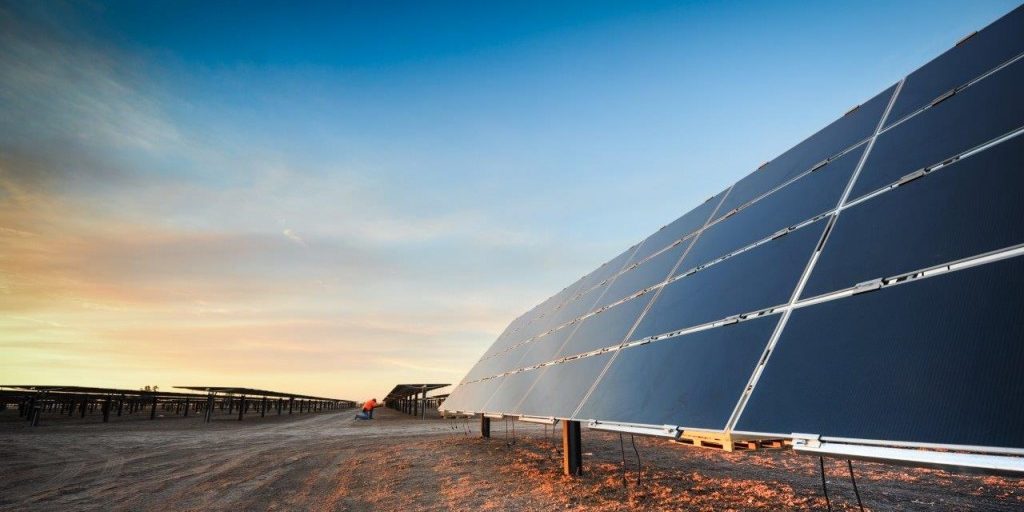I wonder what it’s like when you sign off on one of the largest solar power projects in the United States, at the lowest price in the country. And if that project is going to pay an effective 1.795¢/kWh in 2043, you’ve got to be real confident in your numbers when asking a banker for a few hundred million.

Martin Hermann of 8minutenergy, while at Intersolar North America 2018, took the time to sit down with pv magazine to talk about building the future.
People don’t expect the extent and the speed. It’ll be much faster than expected.
That was Hermann expounding upon what’s about to hit us in the form of wind, solar and batteries at the utility scale level. From his perspective, it all comes down to technology progression, which Hermann saw in the form of Moore’s Law in his prior semiconductor career.
When Hermann said he saw no reason for the price decreases to stop – and expressed a strong desire to continue being in the lead of that attack – you could sense a certain inevitability, where he knew there was no potential future other than one with an aggressive, ongoing evolution.
Hermann predicts that among the first casualties of the rise of solar and storage will be the gas peaker plant, something that pv magazine agrees with. Hermann estimated that a 4-hour duration battery bidding into the day ahead markets at 3.5-6.0¢/kWh beats a gas peaker plants by “leaps and bounds”.
But to be in that market, you’ve got to understand what you’re buying. It wasn’t until recent times when you could have control over defining the bill of materials of a solar module. However, to deliver on what’s promised in an industry with an inherent conflict of new technology versus thirty five year life times, you’ve got no choice but to focus on that level.
The advantage of scale is that we can afford to dive deep. We have a history of looking under the hood, and because of our scale, we’ve now got the luxury of dictating our bill of materials.
It does not appear that 8minutenergy has bill of material problems.
During the interview the combination of solar power and energy storage was regularly referenced. And much like bill of material research is important for solar modules, 8minutenergy says it is the same with batteries.
While the company wouldn’t comment on whether they had any longer duration battery projects in the queue, Hermann did state that longer duration was important, but that he didn’t think we’d need “24 hours of batteries”.
The company has an 8.5 GW portfolio of solar projects. Last year, when it published its official entry into the energy storage market, the company did so with a 1 GW pipeline of projects.
I guess if you’ve got to start somewhere, pick a nice round number.
pv magazine started the interview with a number of technical, system design, type of questions: DC:AC ratios, battery duration, inverter technology, solar module choice – which are all topics we’re seeing constant developments in. The reaction to these industry shifts was consistent – analyze it, take advantage of it, and move on.
What do we do about solar power driving daytime pricing towards zero – sometimes being curtailed? What are the consequences? Hermann flipped it:
The answer is not whether we should do this. We are successful if we’ve driven the price to the point where you don’t have to pay. And I expect this to continue.
Chaos embraced, but managed.
DC to AC ratios increasing? It’s not magical, but for very specific reasons. The final values are being driven by the sizes of their inverters, the pieces of land they’ve cobbled together, the offtaker’s needs. As Hermann stated, everything is “economically driven”.
What about using SolarEdge optimizers on your modules? “If the price point is strong” was the quick answer. SolarEdge should call.
Bifacial solar panels? “A new calculation dynamic”.
Hermann’s answers pointed to the inevitability of a future full of change, full of evolution, quantified as best as you can by knowing your product, and hedged by heeding the risks.
That’s how you get a few hundred million for the lowest priced, and among the largest solar power plants on earth.

This content is protected by copyright and may not be reused. If you want to cooperate with us and would like to reuse some of our content, please contact: editors@pv-magazine.com.


















By submitting this form you agree to pv magazine using your data for the purposes of publishing your comment.
Your personal data will only be disclosed or otherwise transmitted to third parties for the purposes of spam filtering or if this is necessary for technical maintenance of the website. Any other transfer to third parties will not take place unless this is justified on the basis of applicable data protection regulations or if pv magazine is legally obliged to do so.
You may revoke this consent at any time with effect for the future, in which case your personal data will be deleted immediately. Otherwise, your data will be deleted if pv magazine has processed your request or the purpose of data storage is fulfilled.
Further information on data privacy can be found in our Data Protection Policy.